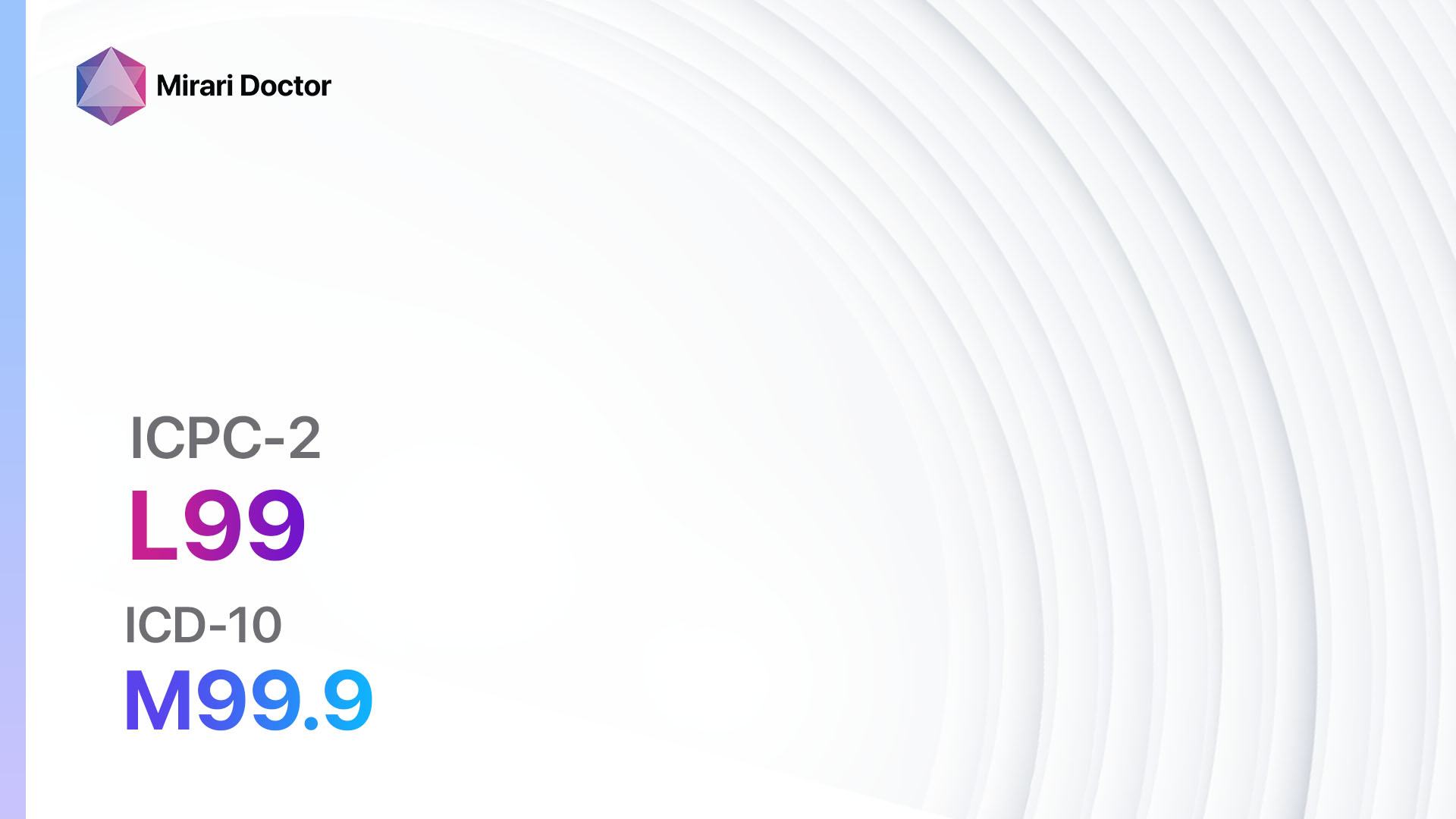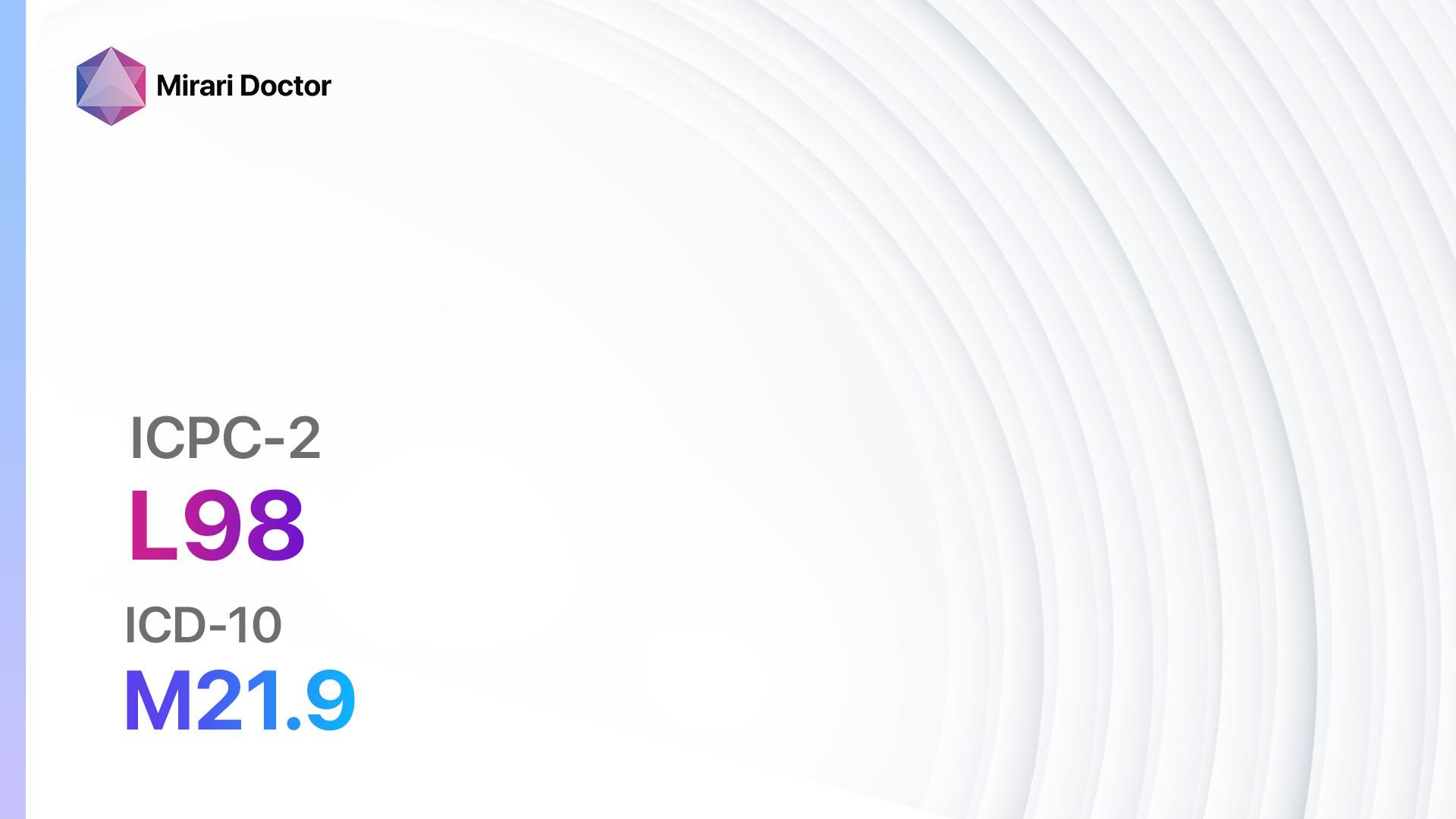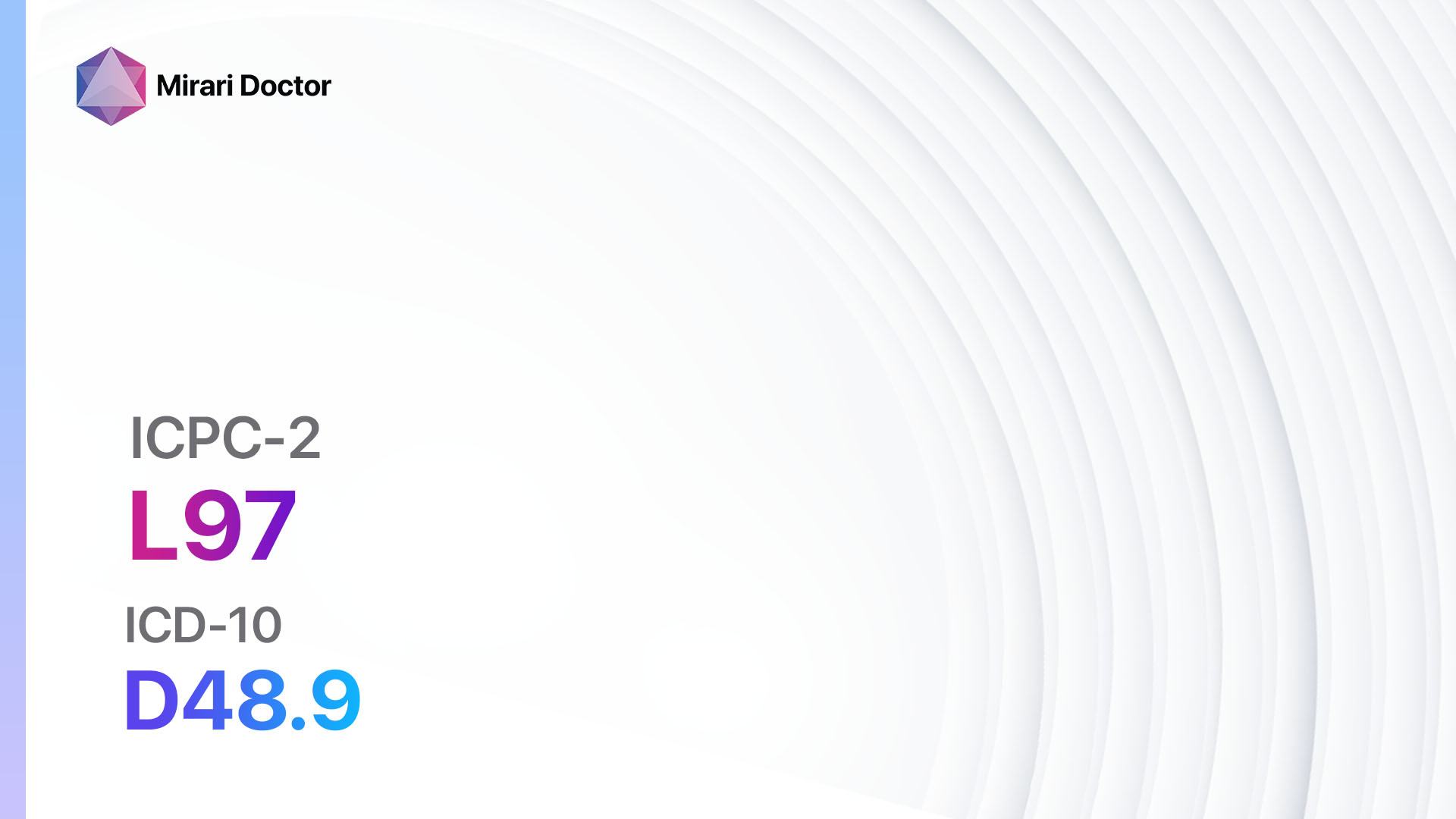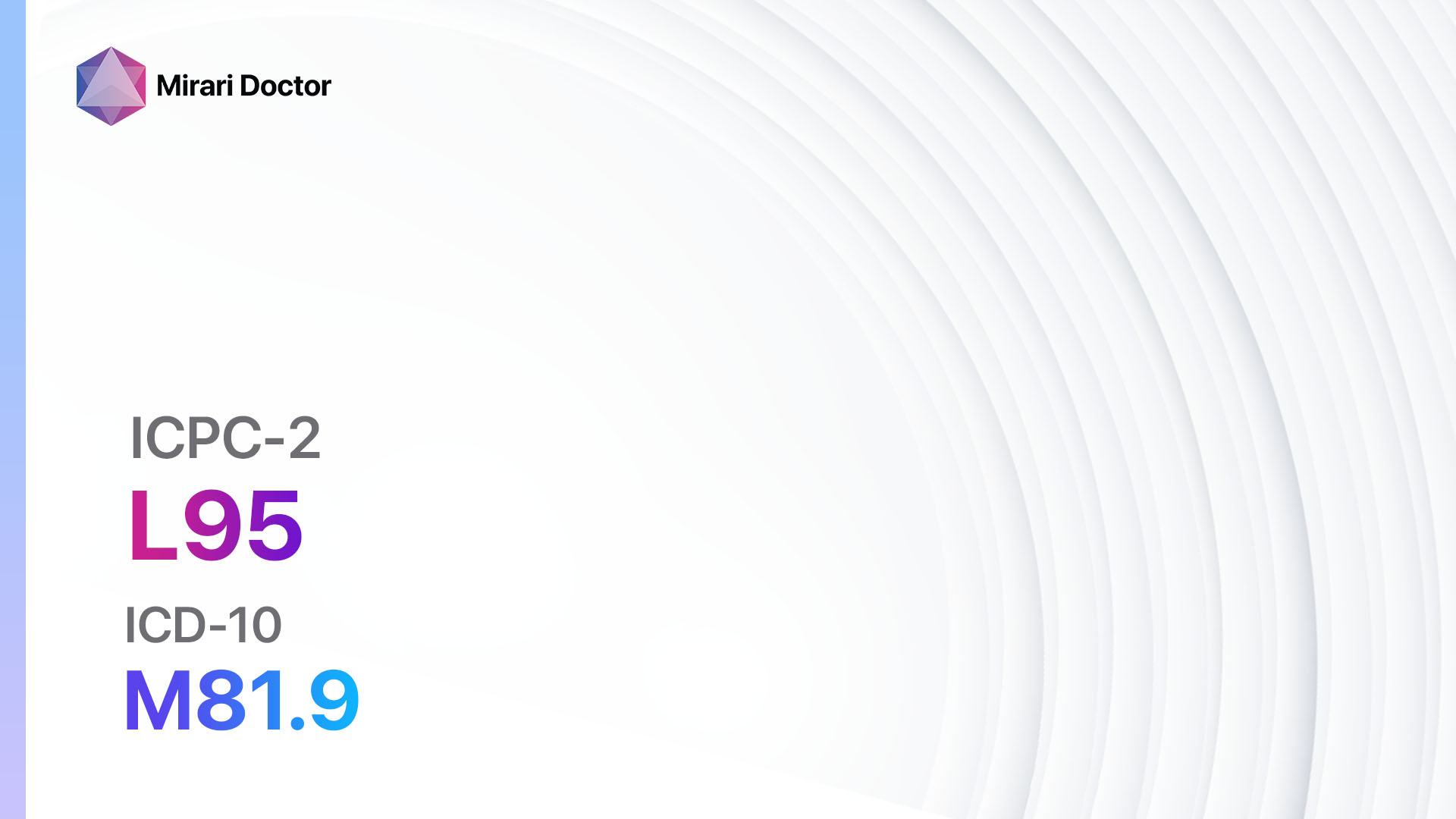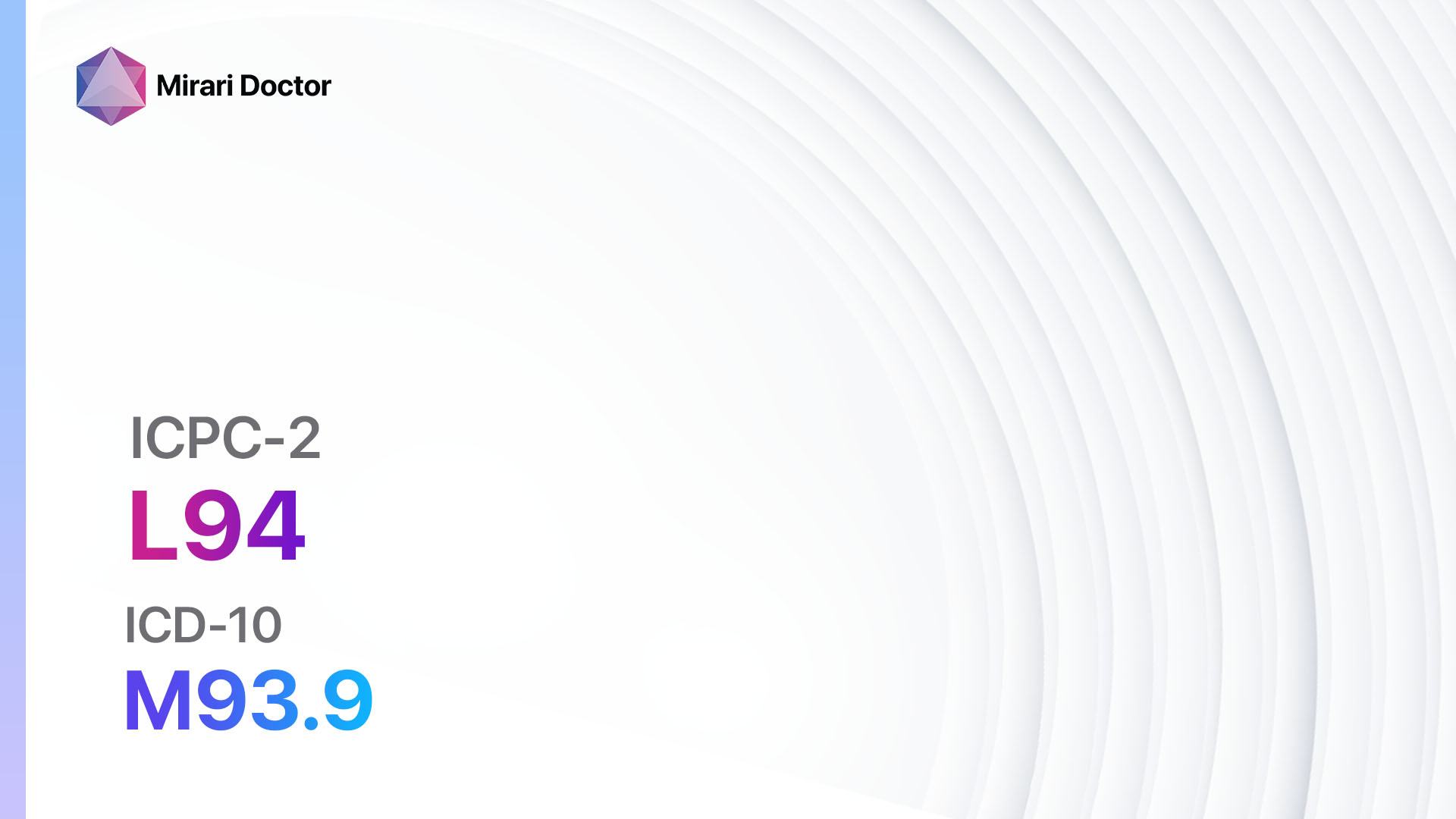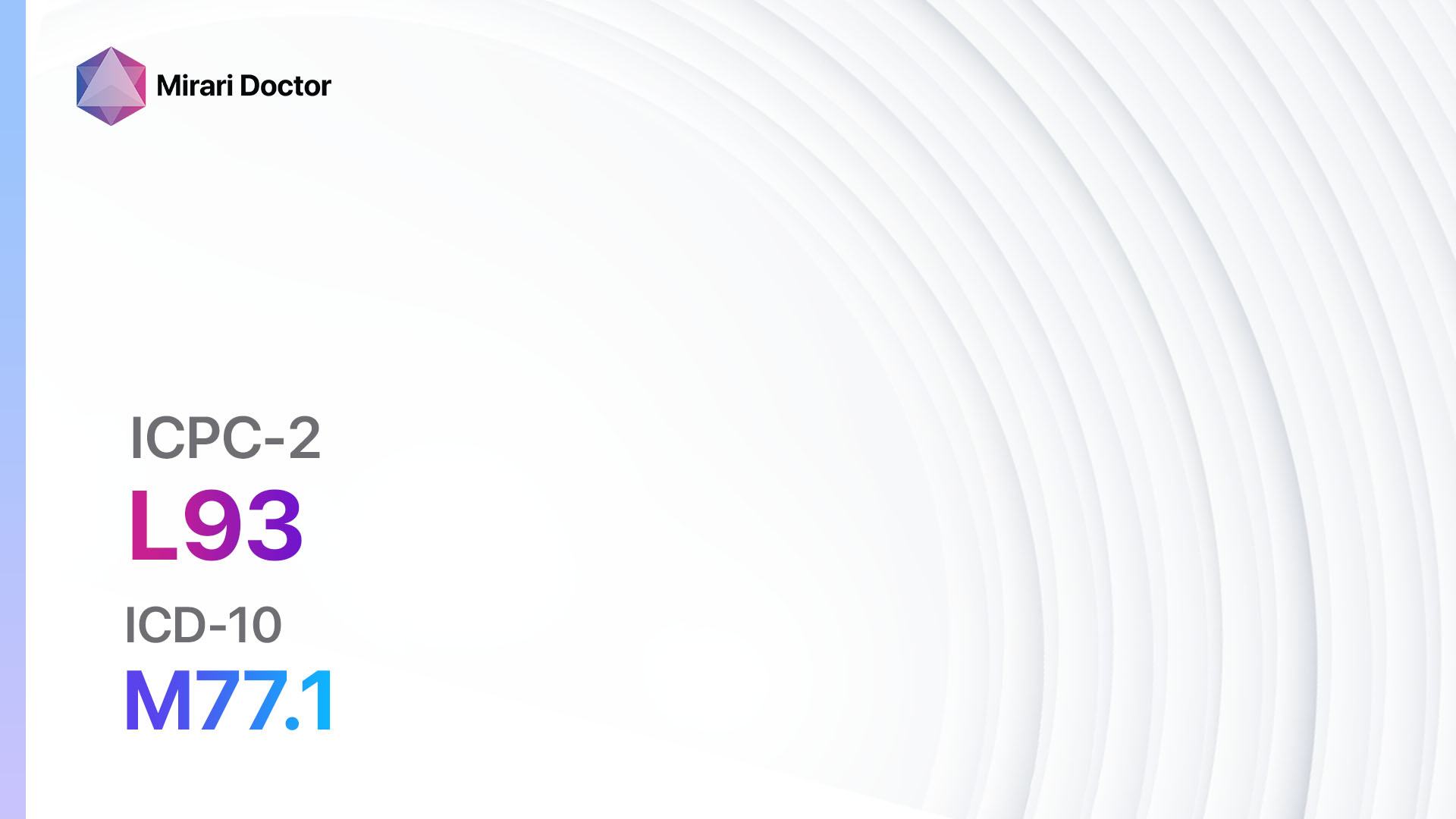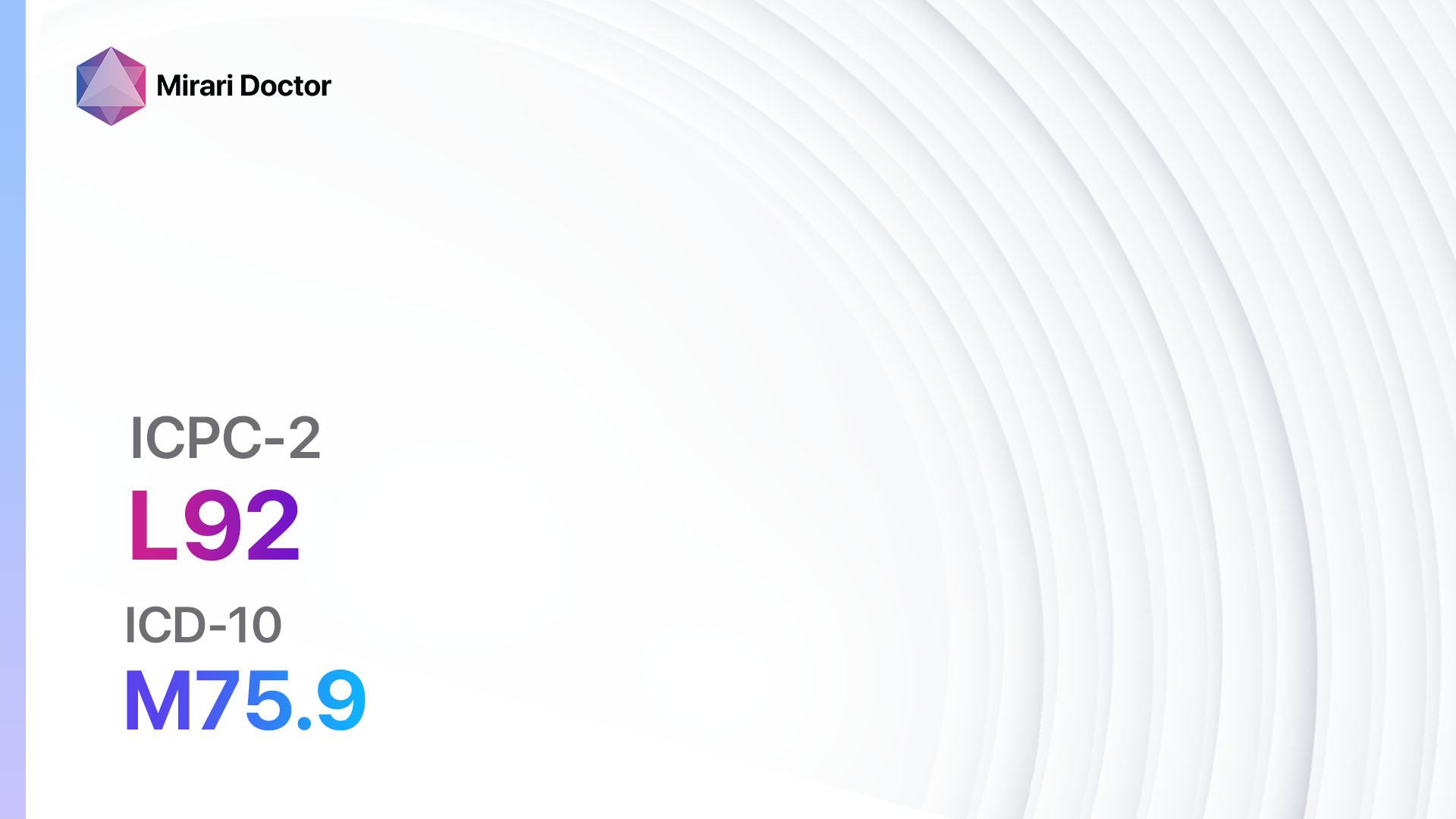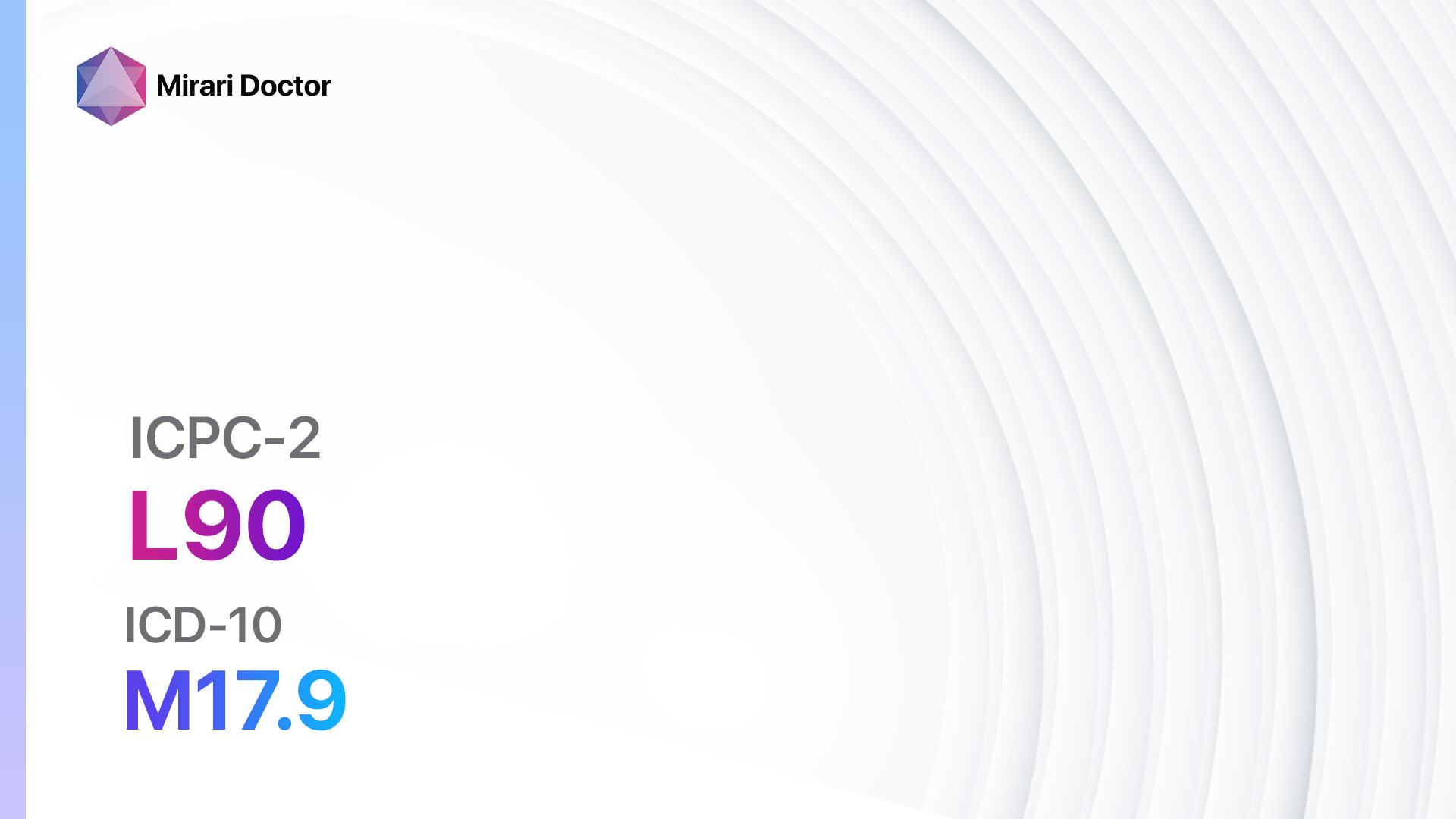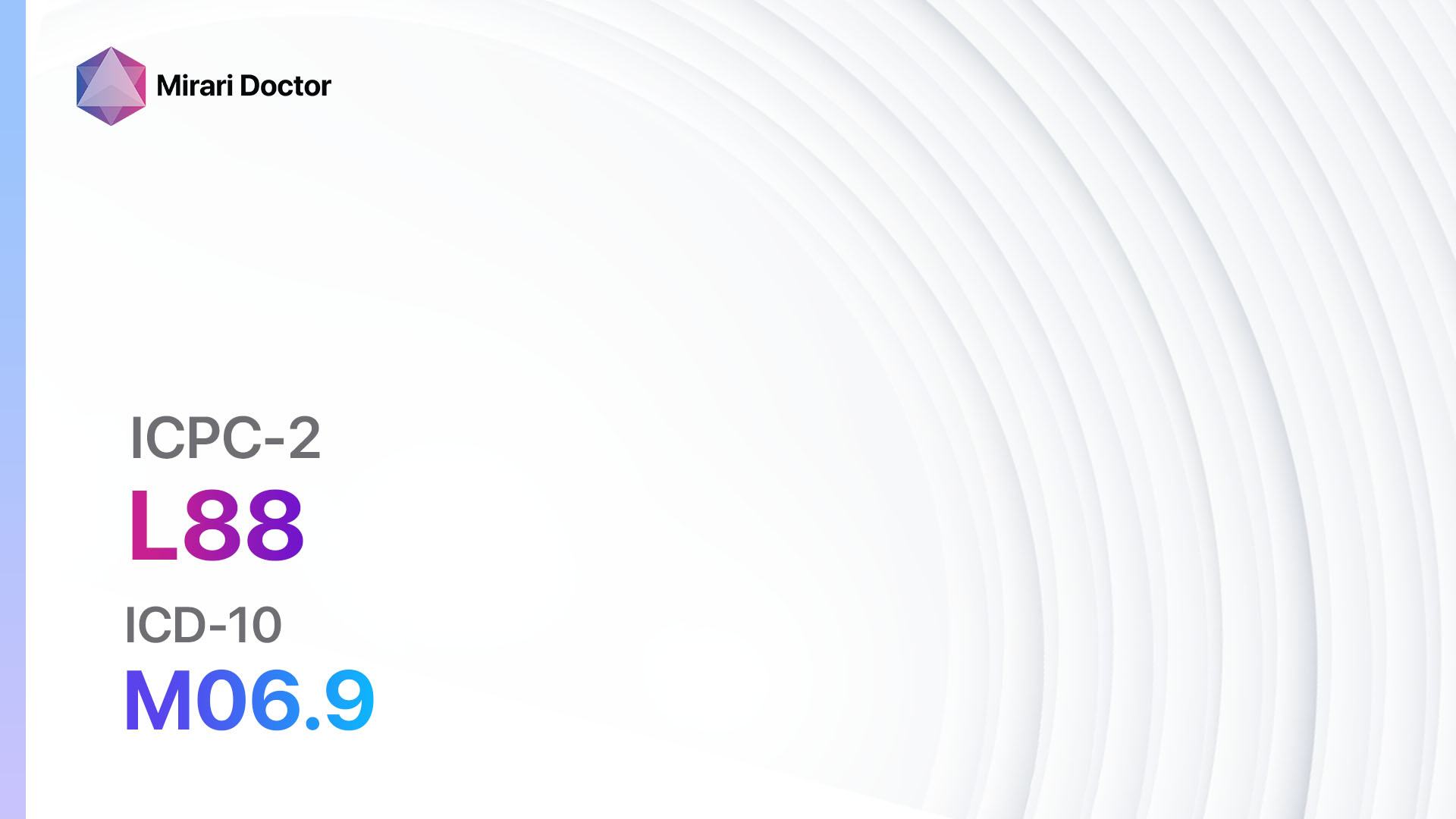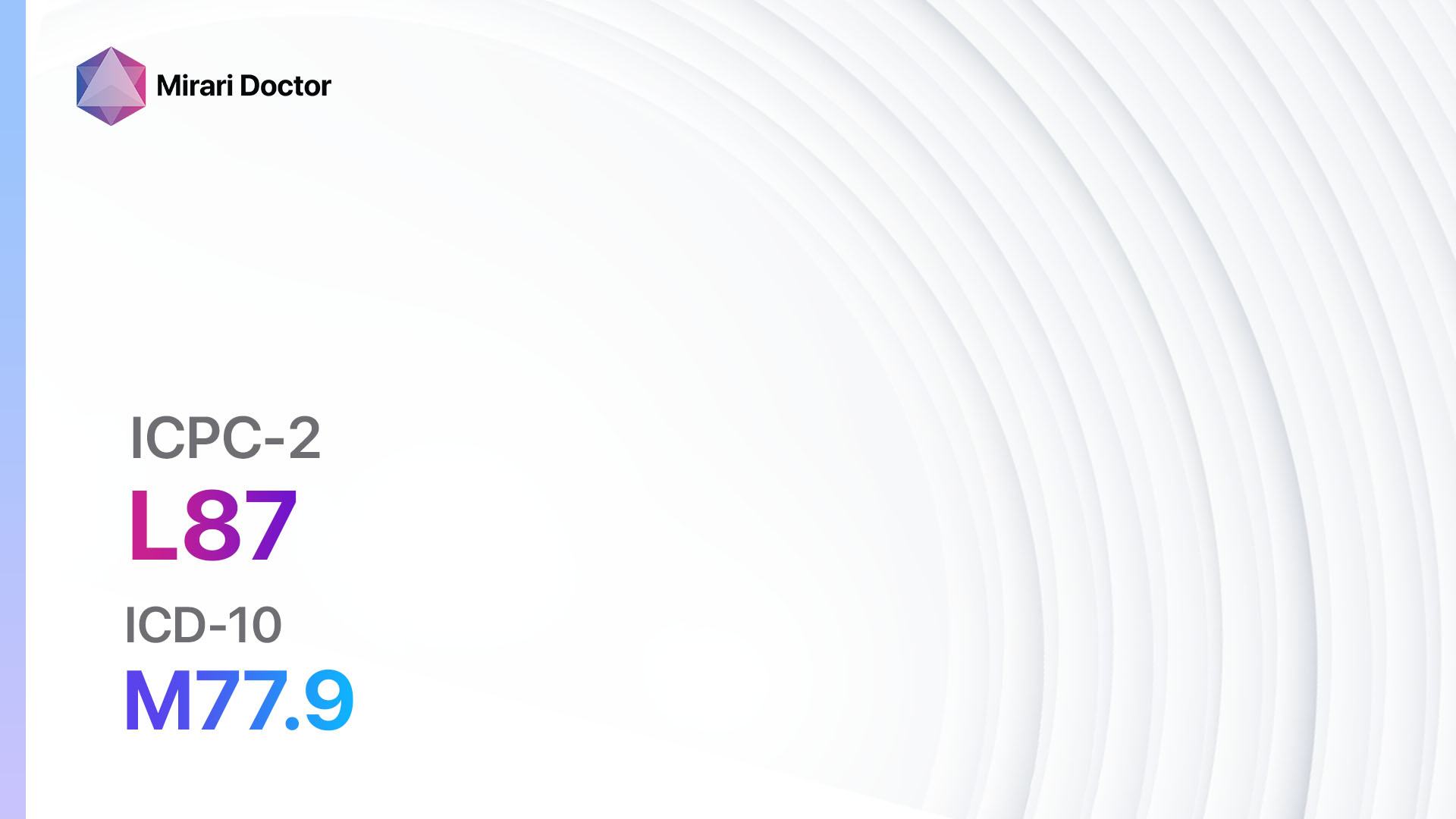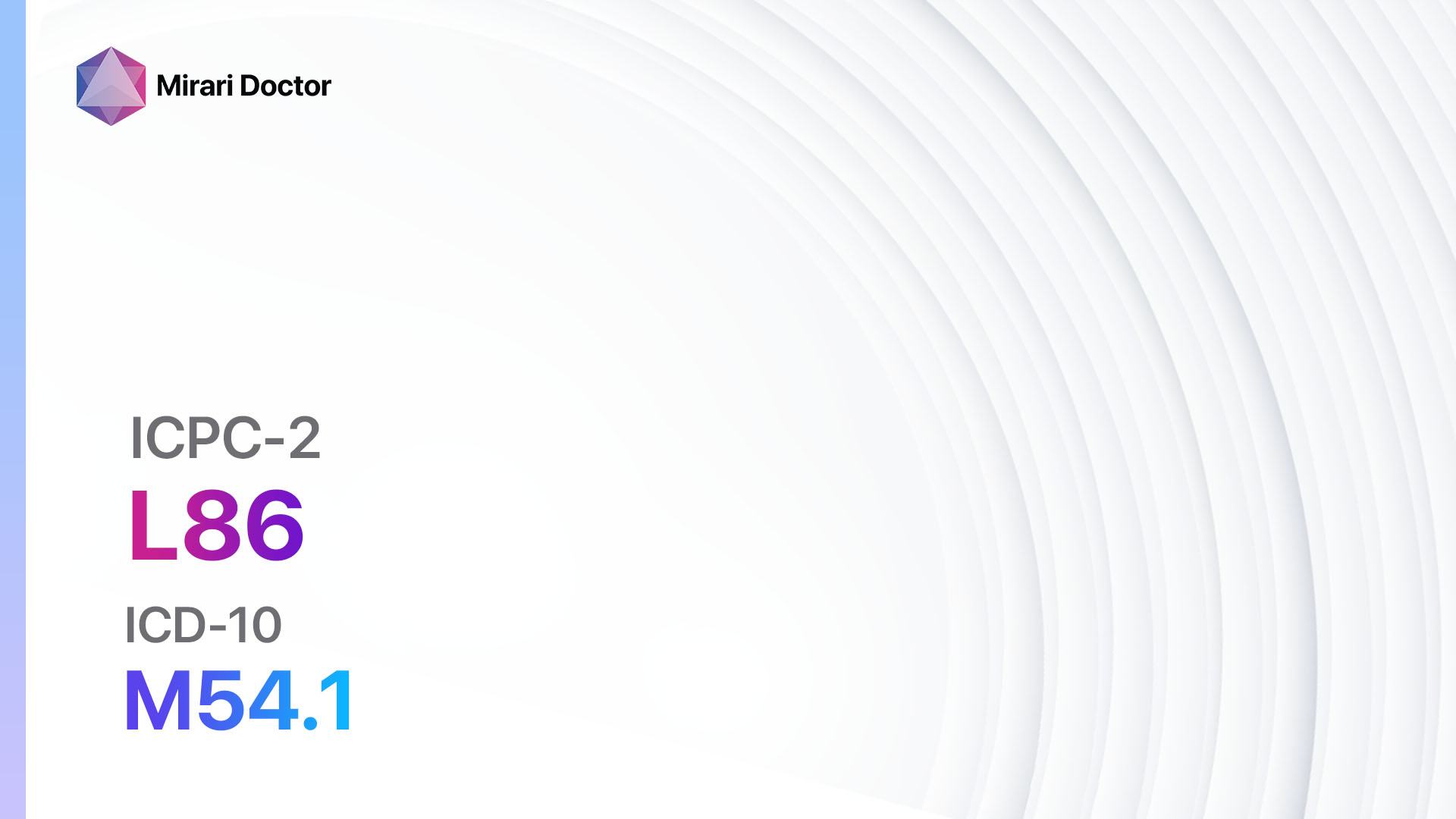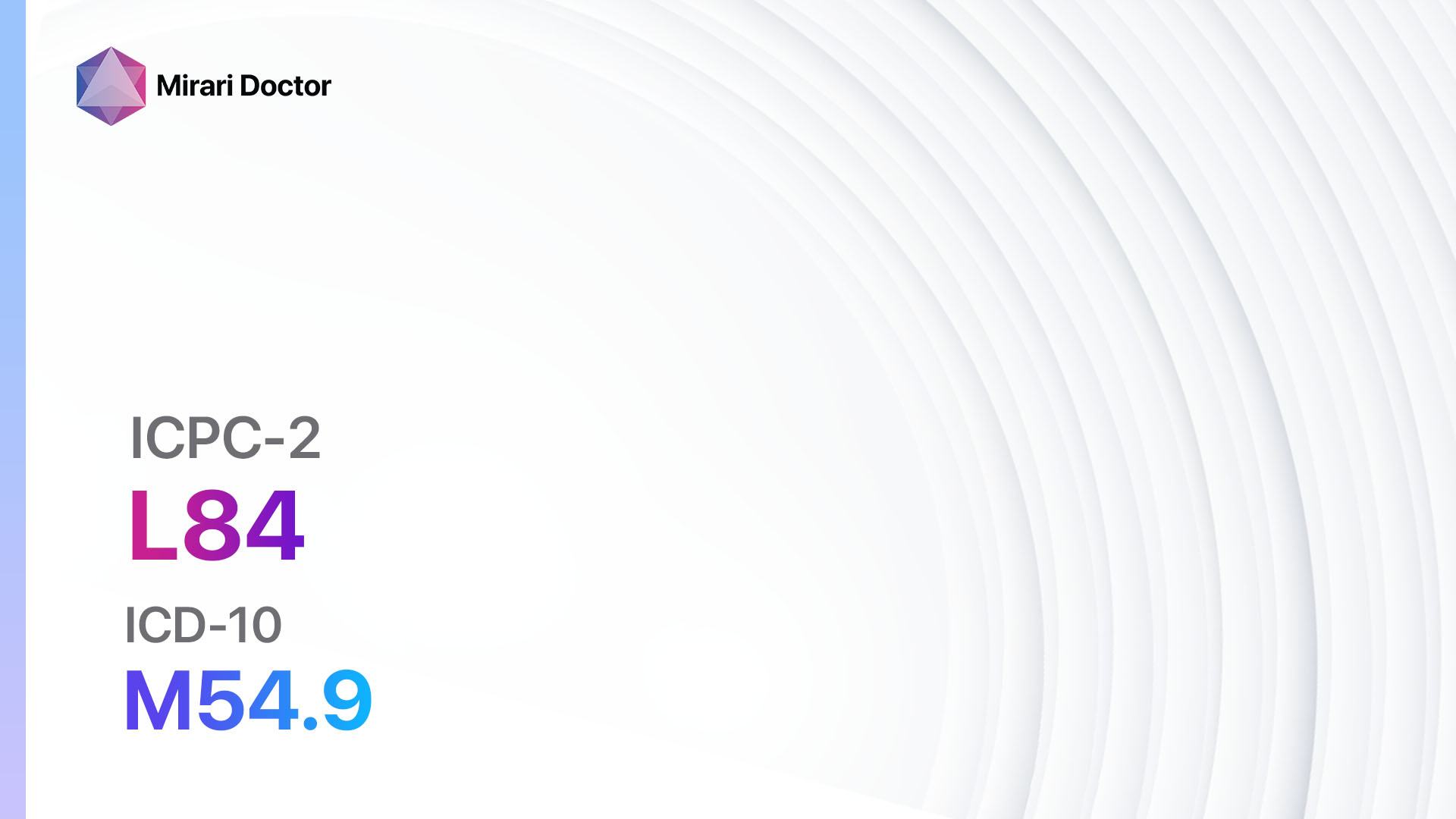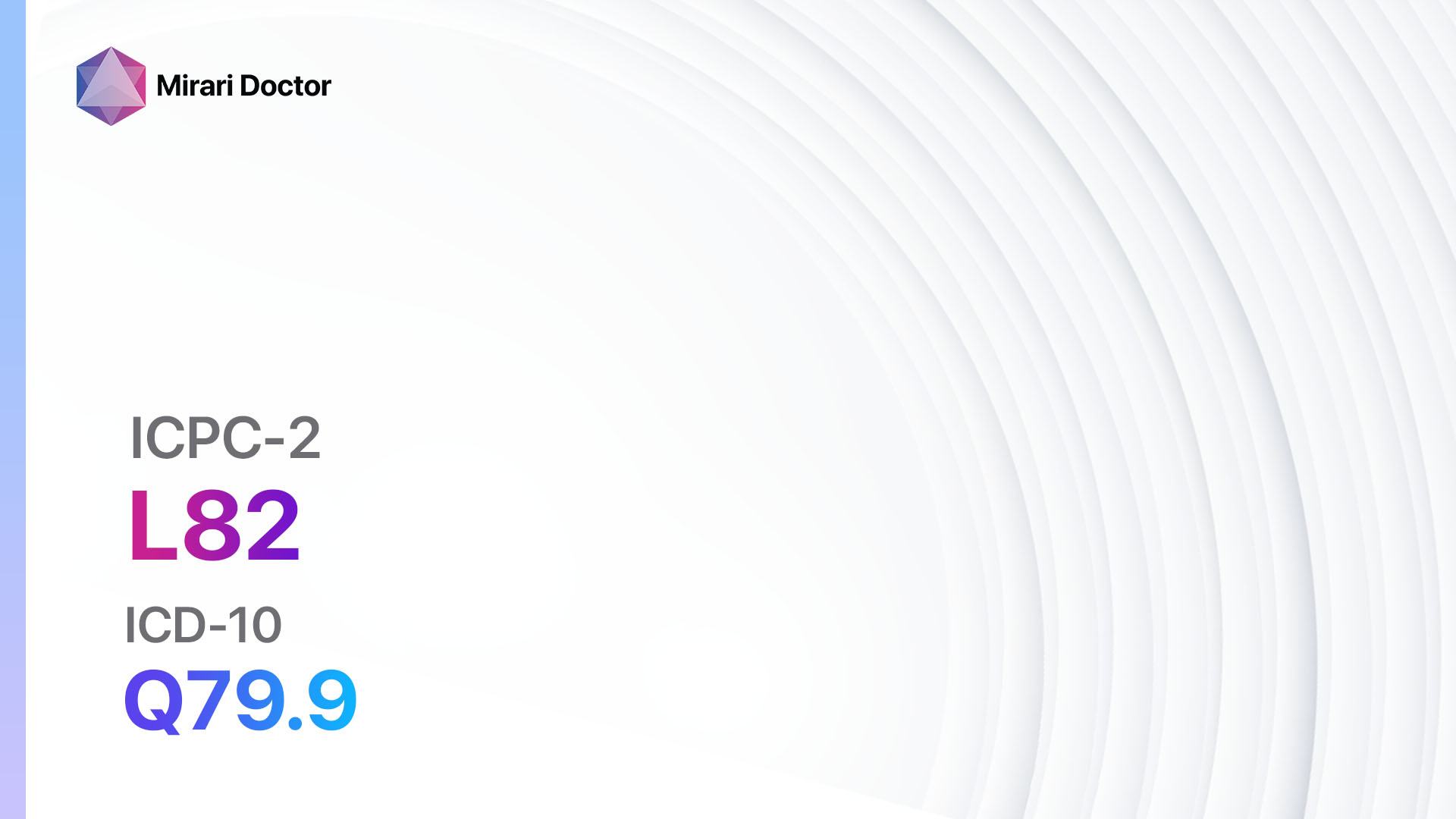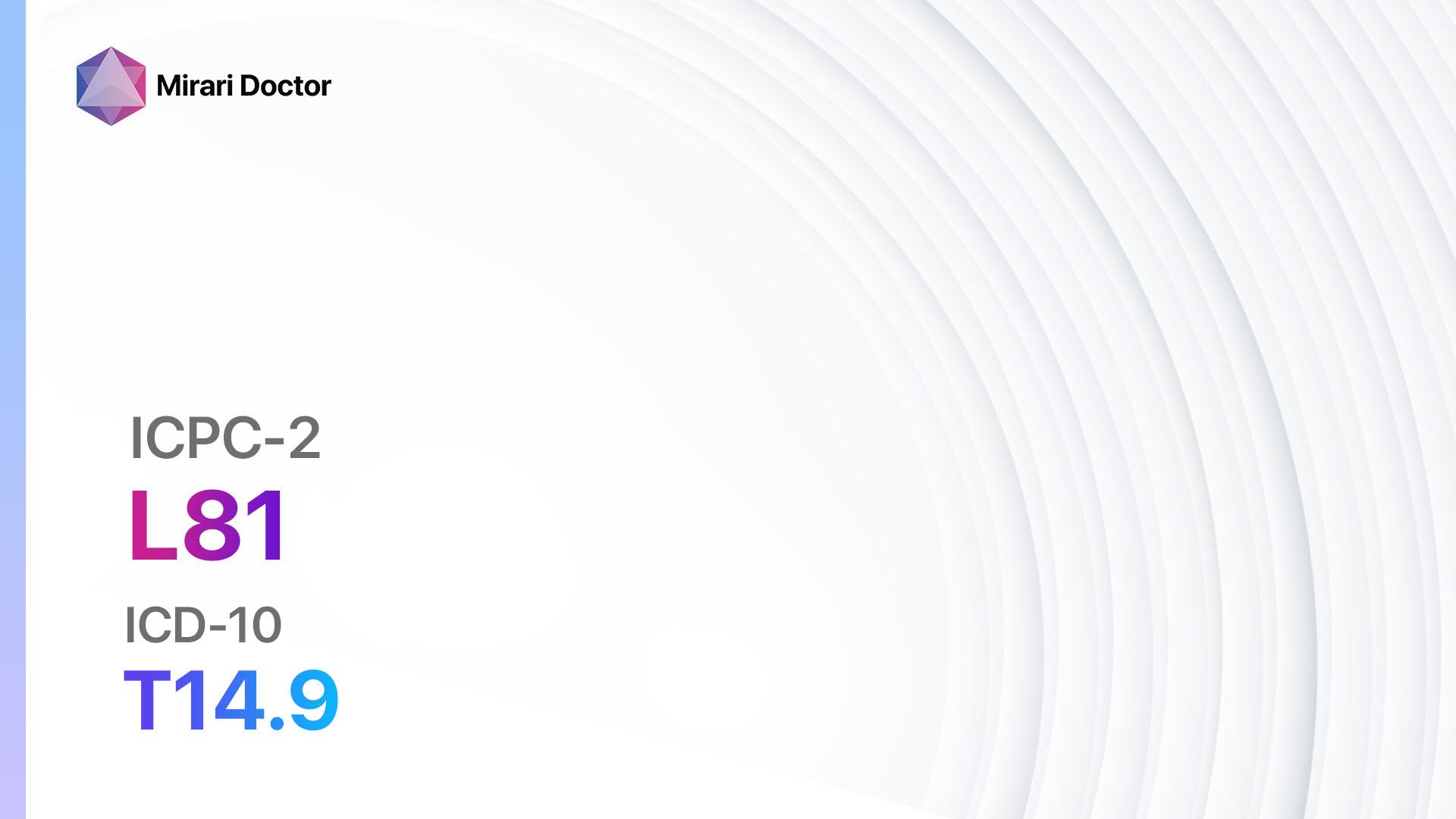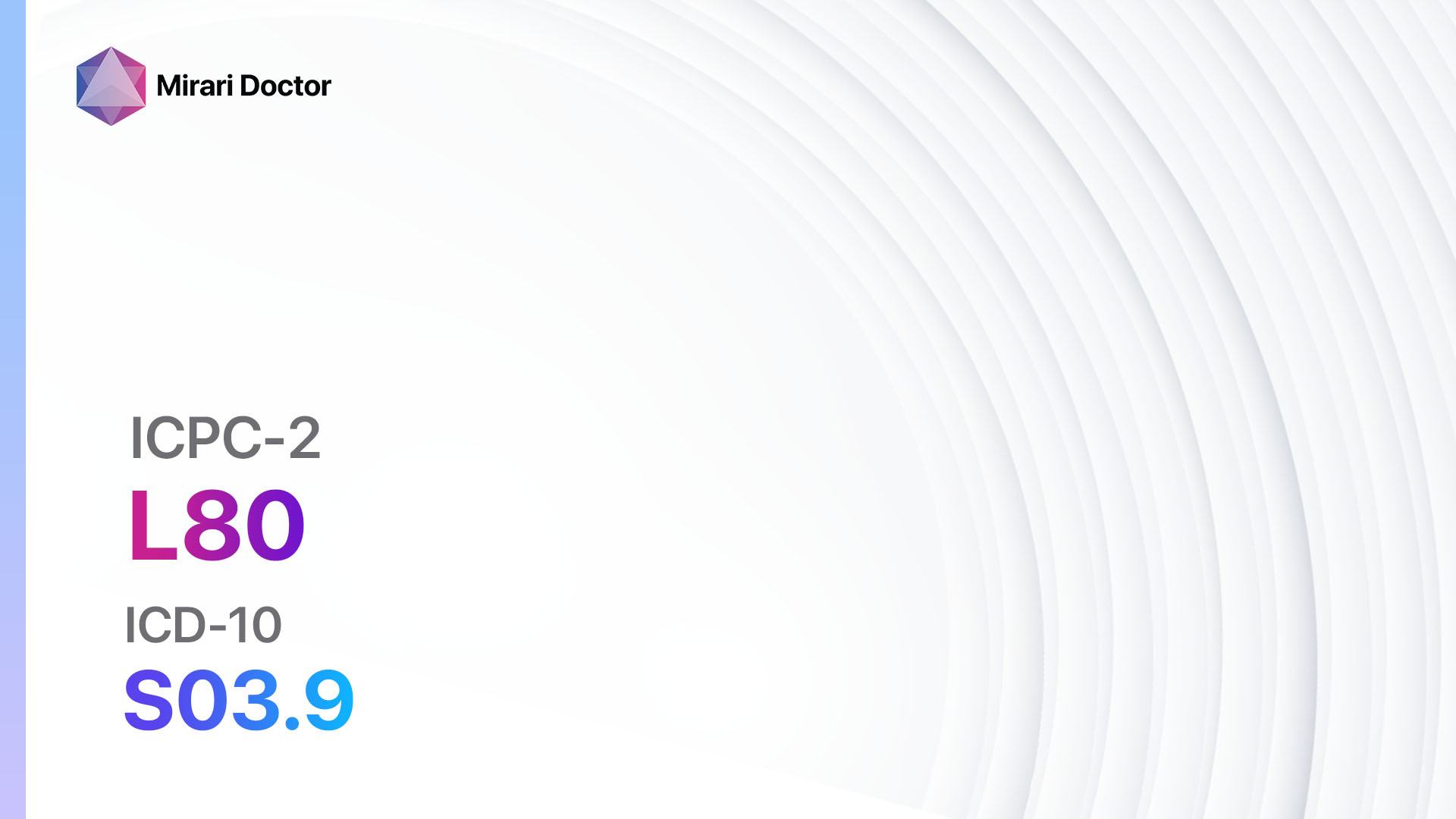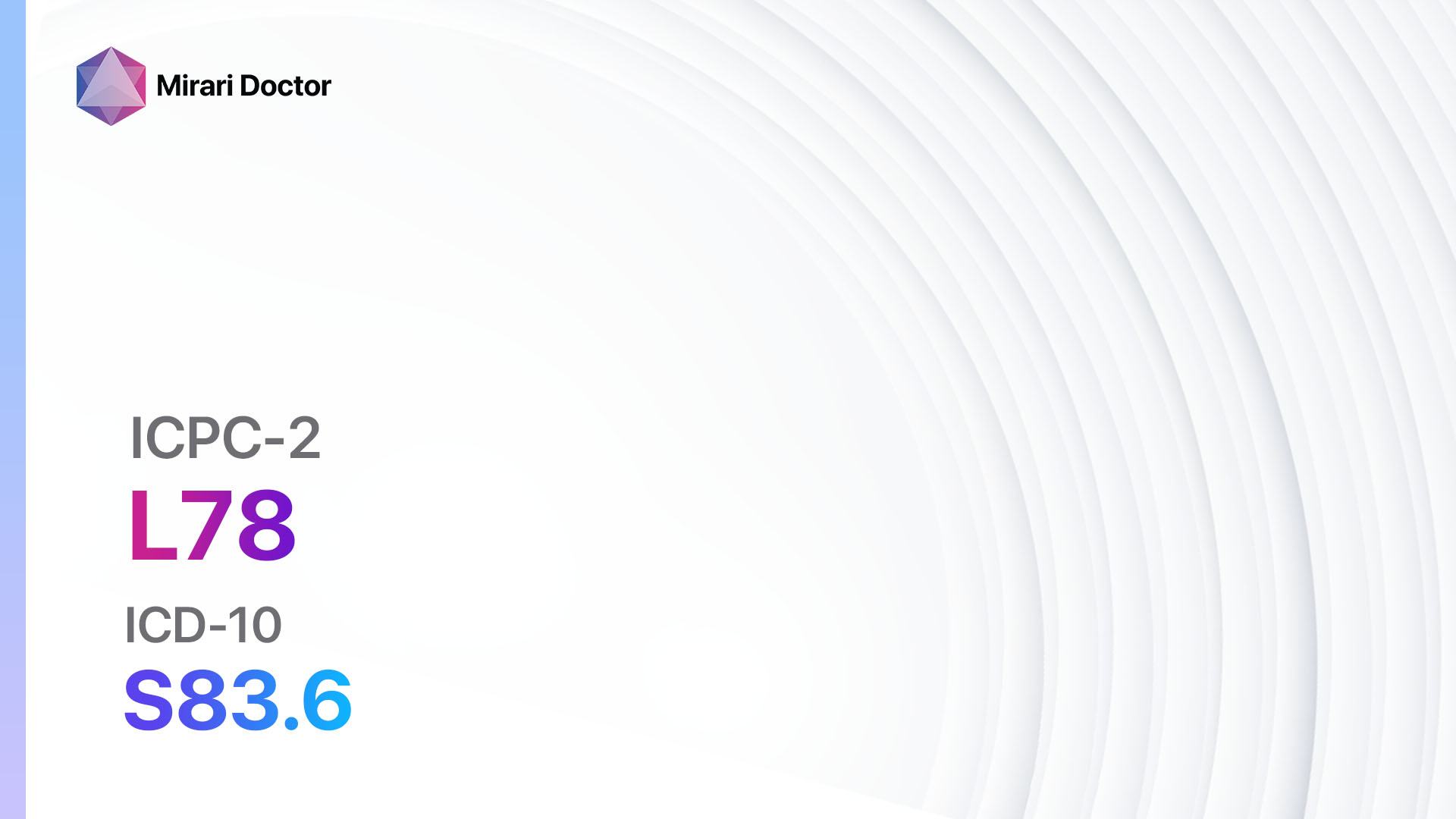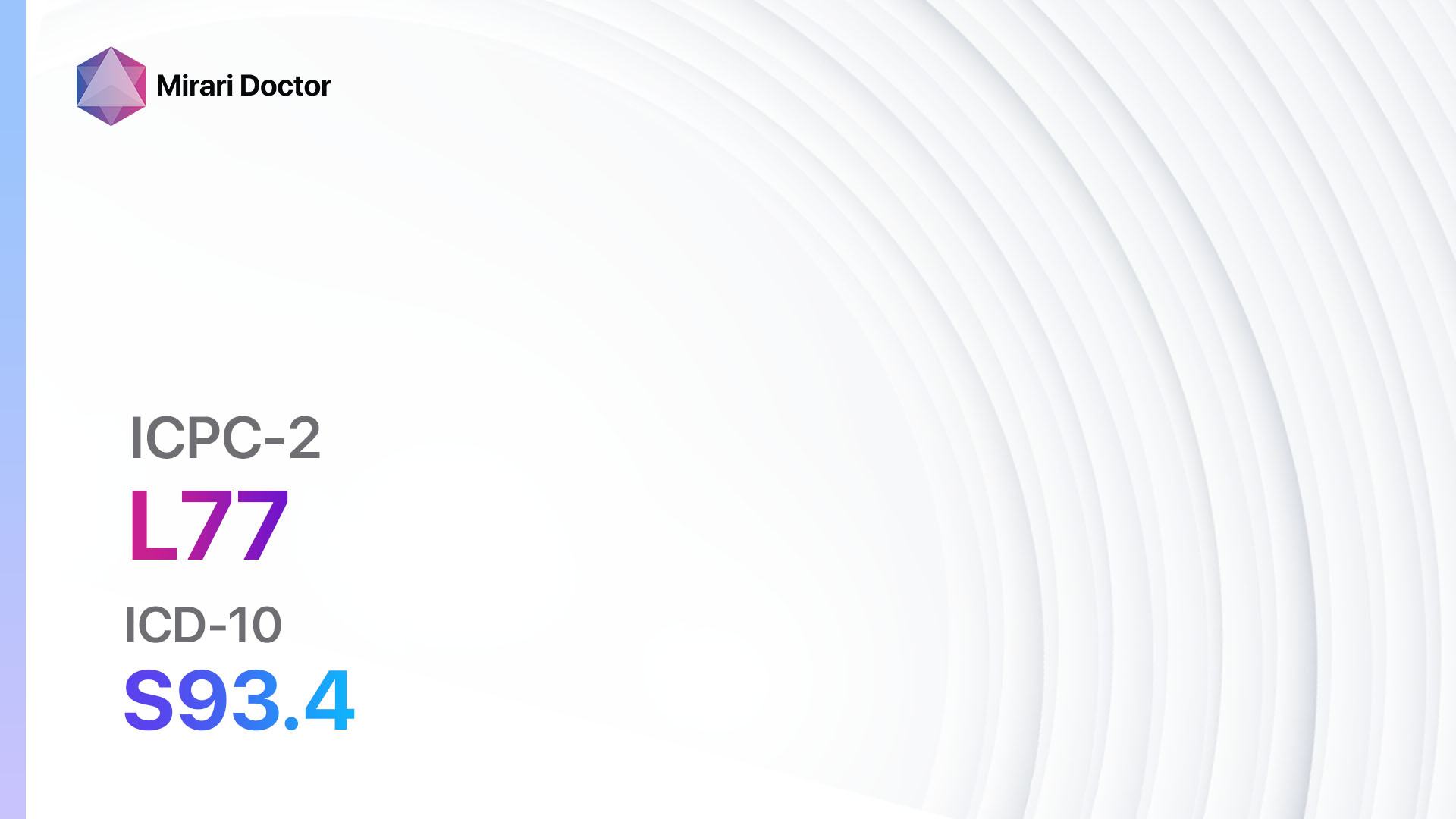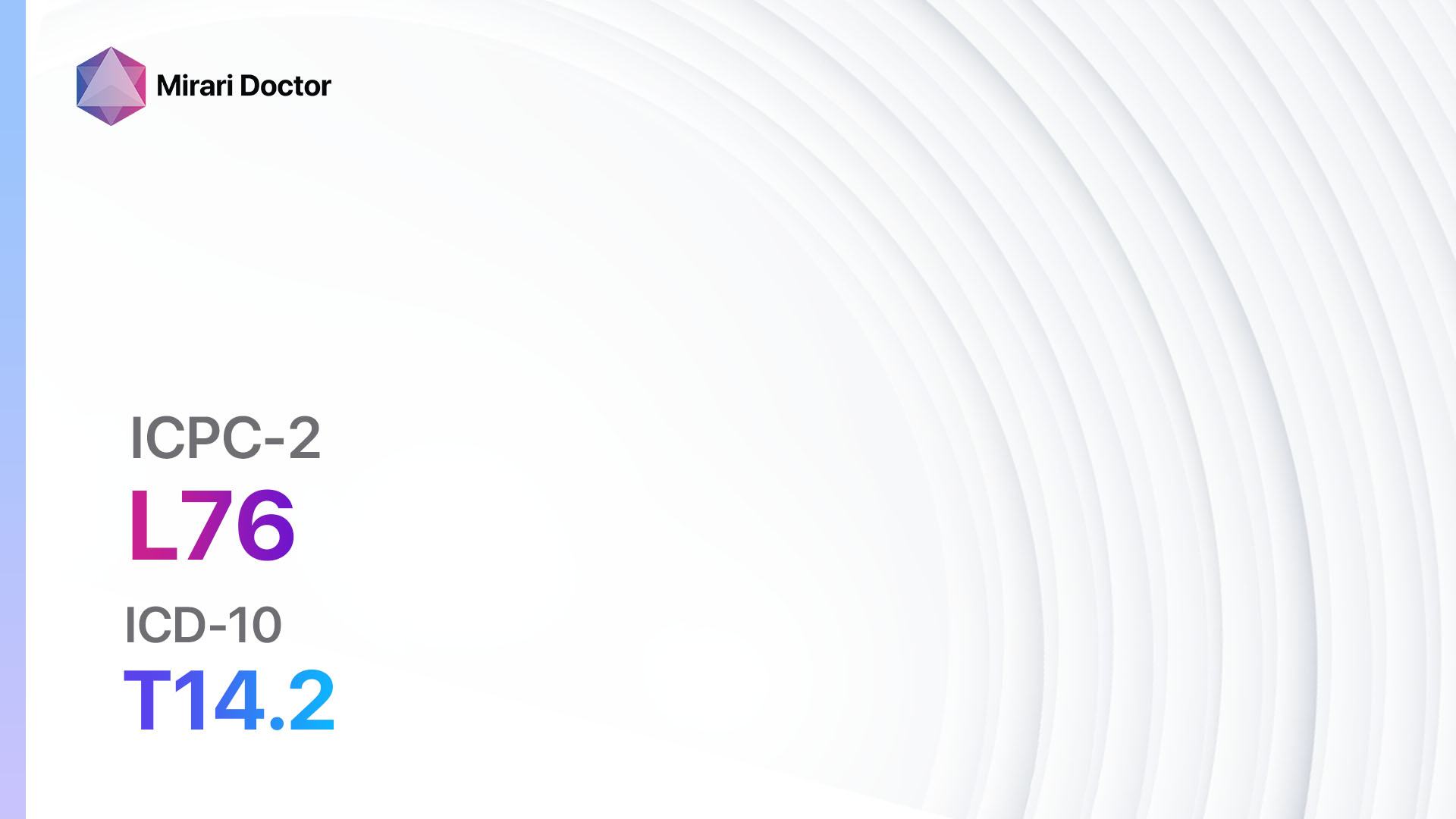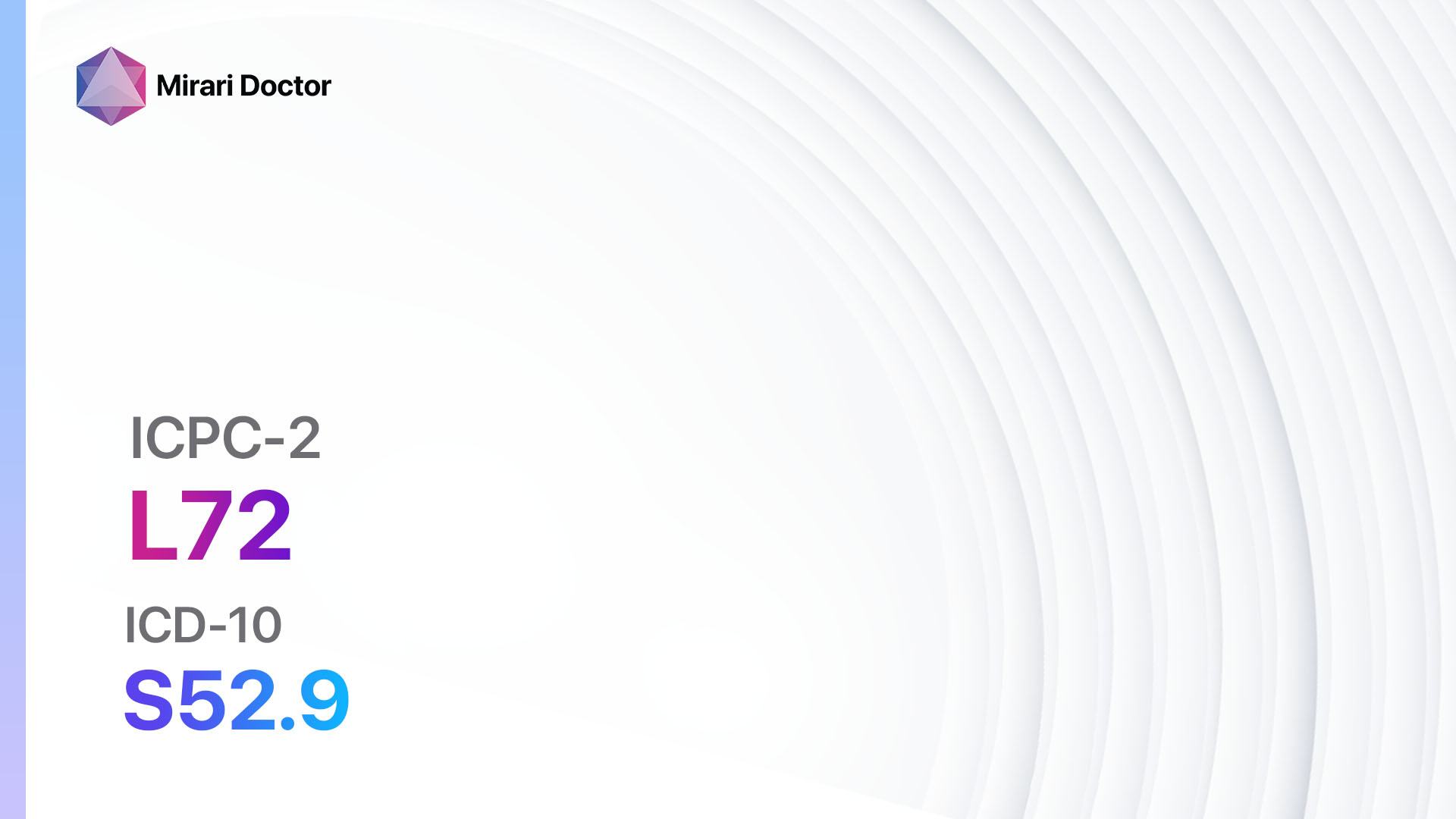
Introduction
Fracture of the radius and ulna is a common injury that can cause significant pain, swelling, and limited mobility in the affected arm[1]. The aim of this guide is to provide healthcare professionals with a comprehensive overview of the diagnosis and management of this
Codes
Symptoms
- Pain: Patients may experience localized pain at the site of the fracture, which can be aggravated by movement or pressure[4].
- Swelling: Swelling and bruising may be present around the fractured area[4].
- Deformity: In some cases, the fracture may cause visible deformity or misalignment of the arm[5].
- Limited mobility: Fractures of the radius and ulna can restrict the range of motion in the affected arm[6].
- Tenderness: The fractured area may be tender to touch[4].
Causes
- Trauma: Fractures of the radius and ulna commonly occur due to falls, sports injuries, or motor vehicle accidents[7].
- Repetitive stress: Overuse or repetitive stress on the arm, such as in athletes or manual laborers, can lead to stress fractures[8].
Diagnostic Steps
Medical History
- Gather information about the mechanism of injury or any repetitive activities that may have contributed to the fracture[9].
- Assess for any underlying medical conditions or risk factors that may affect fracture healing, such as osteoporosis or vitamin D deficiency[9].
- Inquire about the presence of symptoms such as pain, swelling, or limited mobility[9].
Physical Examination
- Inspect the affected arm for any visible deformity, swelling, or bruising[9].
- Palpate the area around the fracture site to assess for tenderness[9].
- Evaluate the range of motion of the affected arm and compare it to the unaffected arm[9].
- Perform neurovascular examination to assess for any nerve or blood vessel damage[9].
Laboratory Tests
- Complete blood count (CBC): May be done to assess for any signs of infection or anemia[10].
- Basic metabolic panel (BMP): Can help evaluate the patient’s overall health status and rule out any electrolyte imbalances[10].
- Vitamin D levels: Low levels of vitamin D can impair fracture healing and may need to be addressed.
Diagnostic Imaging
- X-ray: X-rays are the primary imaging modality for diagnosing fractures. Anteroposterior and lateral views of the affected arm should be obtained to assess the extent and location of the fracture.
- CT scan: In complex fractures or cases where further evaluation is needed, a CT scan may be ordered to provide more detailed images of the fracture.
Other Tests
- MRI: In cases where soft tissue injuries or ligamentous damage is suspected, an MRI may be ordered to assess the extent of the injury.
- Bone density scan: If osteoporosis is suspected, a bone density scan may be performed to assess bone mineral density.
Follow-up and Patient Education
- Provide the patient with information about the expected healing time and any restrictions on activities during the healing process.
- Schedule follow-up appointments to monitor the progress of healing and assess for any complications.
- Educate the patient on the importance of compliance with treatment and rehabilitation exercises.
Possible Interventions
Traditional Interventions
Medications:
Top 5 drugs for Fracture: radius/ulna:
- Acetaminophen (e.g., Tylenol):
- Cost: $5-$10 for a bottle of 100 tablets.
- Contraindications: Allergy to acetaminophen, severe liver disease.
- Side effects: Rare at therapeutic doses.
- Severe side effects: Liver damage at high doses.
- Drug interactions: None significant.
- Warning: Do not exceed the recommended dosage.
- Nonsteroidal anti-inflammatory drugs (NSAIDs) (e.g., Ibuprofen, Naproxen):
- Cost: $5-$15 for a bottle of 100 tablets.
- Contraindications: Active peptic ulcer disease, history of gastrointestinal bleeding.
- Side effects: Upset stomach, heartburn.
- Severe side effects: Gastrointestinal bleeding, kidney damage.
- Drug interactions: Blood thinners, other NSAIDs.
- Warning: Long-term use may increase the risk of cardiovascular events.
- Opioids (e.g., Oxycodone, Hydrocodone):
- Cost: Varies depending on the specific medication and dosage.
- Contraindications: Respiratory depression, severe asthma.
- Side effects: Constipation, drowsiness.
- Severe side effects: Respiratory depression, addiction.
- Drug interactions: Sedatives, alcohol.
- Warning: Use with caution and closely monitor for signs of opioid misuse.
- Muscle relaxants (e.g., Cyclobenzaprine, Methocarbamol):
- Cost: $10-$20 for a bottle of 30 tablets.
- Contraindications: Glaucoma, urinary retention.
- Side effects: Drowsiness, dry mouth.
- Severe side effects: None significant.
- Drug interactions: Sedatives, alcohol.
- Warning: May cause drowsiness, avoid driving or operating heavy machinery.
- Bisphosphonates (e.g., Alendronate, Risedronate):
- Cost: $10-$50 for a monthly supply.
- Contraindications: Esophageal abnormalities, inability to sit or stand upright for at least 30 minutes.
- Side effects: Upset stomach, heartburn.
- Severe side effects: Osteonecrosis of the jaw, atypical fractures.
- Drug interactions: Calcium supplements, antacids.
- Warning: Take on an empty stomach with a full glass of water, remain upright for at least 30 minutes after taking.
Alternative Drugs:
- Calcitonin: A hormone that can help reduce pain and promote bone healing. Cost: $100-$200 per dose.
- Selective estrogen receptor modulators (SERMs) (e.g., Raloxifene): Can help prevent bone loss and reduce fracture risk. Cost: $50-$100 for a monthly supply.
- Teriparatide: A synthetic form of parathyroid hormone that stimulates bone formation. Cost: $2,500-$3,000 for a 28-day supply.
- Calcium and vitamin D supplements: Important for bone health and fracture healing. Cost: Varies depending on the specific supplement.
Surgical Procedures:
- Closed reduction and casting: In cases where the fracture is not displaced or unstable, a closed reduction may be performed to realign the bones followed by casting to immobilize the arm. Cost: $500-$1,000.
- Open reduction and internal fixation (ORIF): If the fracture is displaced or unstable, surgery may be required to realign the bones and fix them with plates, screws, or rods. Cost: $10,000-$20,000.
- External fixation: In complex fractures or cases with soft tissue damage, an external fixator may be used to stabilize the bones. Cost: $5,000-$10,000.
Alternative Interventions
- Physical therapy: Can help improve range of motion, strength, and function of the affected arm. Cost: $50-$150 per session.
- Acupuncture: May help reduce pain and promote healing. Cost: $60-$120 per session.
- Low-level laser therapy: Can accelerate healing and reduce pain. Cost: $50-$100 per session.
- Transcutaneous electrical nerve stimulation (TENS): May provide pain relief. Cost: $50-$100 for a TENS unit.
- Herbal supplements: Some herbs, such as Arnica and Comfrey, may have potential benefits for reducing pain and inflammation. Cost: Varies depending on the specific supplement.
Lifestyle Interventions
- Rest and immobilization: Adequate rest and immobilization of the affected arm can promote healing.
- Healthy diet: A diet rich in calcium, vitamin D, and other essential nutrients can support bone health and fracture healing.
- Smoking cessation: Smoking can impair bone healing, so quitting smoking is important for optimal recovery.
- Weight-bearing exercises: Once the fracture has healed, weight-bearing exercises can help strengthen the bones and improve overall bone health.
- Fall prevention: Taking measures to prevent falls, such as removing tripping hazards and using assistive devices, can reduce the risk of fractures.
It is important to note that the cost ranges provided are approximate and may vary depending on the location and availability of the interventions.
Mirari Cold Plasma Alternative Intervention
Understanding Mirari Cold Plasma
- Safe and Non-Invasive Treatment: Mirari Cold Plasma is a safe and non-invasive treatment option for various skin conditions. It does not require incisions, minimizing the risk of scarring, bleeding, or tissue damage.
- Efficient Extraction of Foreign Bodies: Mirari Cold Plasma facilitates the removal of foreign bodies from the skin by degrading and dissociating organic matter, allowing easier access and extraction.
- Pain Reduction and Comfort: Mirari Cold Plasma has a local analgesic effect, providing pain relief during the treatment, making it more comfortable for the patient.
- Reduced Risk of Infection: Mirari Cold Plasma has antimicrobial properties, effectively killing bacteria and reducing the risk of infection.
- Accelerated Healing and Minimal Scarring: Mirari Cold Plasma stimulates wound healing and tissue regeneration, reducing healing time and minimizing the formation of scars.
Mirari Cold Plasma Prescription
Video instructions for using Mirari Cold Plasma Device – L72 Fracture: radius/ulna (ICD-10:S52.9)
| Mild | Moderate | Severe |
| Mode setting: 2 (Wound Healing) Location: 0 (Localized) Morning: 15 minutes, Evening: 15 minutes |
Mode setting: 2 (Wound Healing) Location: 0 (Localized) Morning: 30 minutes, Lunch: 30 minutes, Evening: 30 minutes |
Mode setting: 2 (Wound Healing) Location: 0 (Localized) Morning: 30 minutes, Lunch: 30 minutes, Evening: 30 minutes |
| Mode setting: 9 (Arthritis) Location: 0 (Localized) Morning: 15 minutes, Evening: 15 minutes |
Mode setting: 9 (Arthritis) Location: 0 (Localized) Morning: 30 minutes, Lunch: 30 minutes, Evening: 30 minutes |
Mode setting: 9 (Arthritis) Location: 0 (Localized) Morning: 30 minutes, Lunch: 30 minutes, Evening: 30 minutes |
| Mode setting: 7 (Immunotherapy) Location: 1 (Sacrum) Morning: 15 minutes, Evening: 15 minutes |
Mode setting: 7 (Immunotherapy) Location: 1 (Sacrum) Morning: 30 minutes, Lunch: 30 minutes, Evening: 30 minutes |
Mode setting: 7 (Immunotherapy) Location: 1 (Sacrum) Morning: 30 minutes, Lunch: 30 minutes, Evening: 30 minutes |
| Total Morning: 45 minutes approx. $7.50 USD, Evening: 45 minutes approx. $7.50 USD |
Total Morning: 90 minutes approx. $15 USD, Lunch: 90 minutes approx. $15 USD, Evening: 90 minutes approx. $15 USD, |
Total Morning: 90 minutes approx. $15 USD, Lunch: 90 minutes approx. $15 USD, Evening: 90 minutes approx. $15 USD, |
| Usual treatment for 7-60 days approx. $105 USD – $900 USD | Usual treatment for 6-8 weeks approx. $1,890 USD – $2,520 USD |
Usual treatment for 3-6 months approx. $4,050 USD – $8,100 USD
|
 |
|
Use the Mirari Cold Plasma device to treat Fracture: radius/ulna effectively.
WARNING: MIRARI COLD PLASMA IS DESIGNED FOR THE HUMAN BODY WITHOUT ANY ARTIFICIAL OR THIRD PARTY PRODUCTS. USE OF OTHER PRODUCTS IN COMBINATION WITH MIRARI COLD PLASMA MAY CAUSE UNPREDICTABLE EFFECTS, HARM OR INJURY. PLEASE CONSULT A MEDICAL PROFESSIONAL BEFORE COMBINING ANY OTHER PRODUCTS WITH USE OF MIRARI.
Step 1: Cleanse the Skin
- Start by cleaning the affected area of the skin with a gentle cleanser or mild soap and water. Gently pat the area dry with a clean towel.
Step 2: Prepare the Mirari Cold Plasma device
- Ensure that the Mirari Cold Plasma device is fully charged or has fresh batteries as per the manufacturer’s instructions. Make sure the device is clean and in good working condition.
- Switch on the Mirari device using the power button or by following the specific instructions provided with the device.
- Some Mirari devices may have adjustable settings for intensity or treatment duration. Follow the manufacturer’s instructions to select the appropriate settings based on your needs and the recommended guidelines.
Step 3: Apply the Device
- Place the Mirari device in direct contact with the affected area of the skin. Gently glide or hold the device over the skin surface, ensuring even coverage of the area experiencing.
- Slowly move the Mirari device in a circular motion or follow a specific pattern as indicated in the user manual. This helps ensure thorough treatment coverage.
Step 4: Monitor and Assess:
- Keep track of your progress and evaluate the effectiveness of the Mirari device in managing your Fracture: radius/ulna. If you have any concerns or notice any adverse reactions, consult with your health care professional.
Note
This guide is for informational purposes only and should not replace the advice of a medical professional. Always consult with your healthcare provider or a qualified medical professional for personal advice, diagnosis, or treatment. Do not solely rely on the information presented here for decisions about your health. Use of this information is at your own risk. The authors of this guide, nor any associated entities or platforms, are not responsible for any potential adverse effects or outcomes based on the content.
Mirari Cold Plasma System Disclaimer
- Purpose: The Mirari Cold Plasma System is a Class 2 medical device designed for use by trained healthcare professionals. It is registered for use in Thailand and Vietnam. It is not intended for use outside of these locations.
- Informational Use: The content and information provided with the device are for educational and informational purposes only. They are not a substitute for professional medical advice or care.
- Variable Outcomes: While the device is approved for specific uses, individual outcomes can differ. We do not assert or guarantee specific medical outcomes.
- Consultation: Prior to utilizing the device or making decisions based on its content, it is essential to consult with a Certified Mirari Tele-Therapist and your medical healthcare provider regarding specific protocols.
- Liability: By using this device, users are acknowledging and accepting all potential risks. Neither the manufacturer nor the distributor will be held accountable for any adverse reactions, injuries, or damages stemming from its use.
- Geographical Availability: This device has received approval for designated purposes by the Thai and Vietnam FDA. As of now, outside of Thailand and Vietnam, the Mirari Cold Plasma System is not available for purchase or use.
References
- Chung KC, Spilson SV. The frequency and epidemiology of hand and forearm fractures in the United States. J Hand Surg Am. 2001;26(5):908-915. doi:10.1053/jhsu.2001.26322
- ICPC-2 PLUS GROUPERS Genie Integrated – PenCS. https://help.pencs.com.au/display/ADM/ICPC-2%2BPLUS%2BGROUPERS%2BGenie%2BIntegrated
- 2024 ICD-10-CM Codes S52.9*: Unspecified fracture of forearm. https://www.icd10data.com/ICD10CM/Codes/S00-T88/S50-S59/S52/S52.9-
- Ulna and Radius Fractures (Forearm Fractures). Johns Hopkins Medicine. https://www.hopkinsmedicine.org/health/conditions-and-diseases/ulna-and-radius-fractures-forearm-fractures
- Distal Ulna Fracture: What Is It, Management, and More – Osmosis. https://www.osmosis.org/answers/distal-ulna-fracture
- Radius and ulna fractures: Types, treatment, and rehabilitation. https://www.medicalnewstoday.com/articles/radius-ulna-fracture
- Forearm Fractures: Practice Essentials, Anatomy, Pathophysiology. https://emedicine.medscape.com/article/1239187-overview
- Stress Fractures – OrthoInfo – AAOS. https://orthoinfo.aaos.org/en/diseases–conditions/stress-fractures/
- Forearm Fractures Treatment & Management – Medscape Reference. https://emedicine.medscape.com/article/1239187-treatment
- Fracture, Radius and Ulna – StatPearls – NCBI Bookshelf. https://www.ncbi.nlm.nih.gov/books/NBK556106/
Related articles
Made in USA


